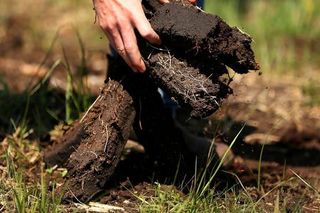Deadly fungus in Tutankhamun’s ‘cursed’ tomb can help fight cancer, research suggests
Tutankhamun’s tomb was opened in 1923. Photo: Getty
The toxic fungus believed to be behind the “curse” of Tutankhamun’s tomb can fight cancer, scientists have found.
Aspergillus flavus is a mould that often grows in long-sealed tombs and can trigger deadly breathing problems or allergic reactions in people with weakened immune systems.
It is thought to be partly responsible for the deaths of several people who entered tombs, including Tutankhamun’s in 1923, and the 15th-century Polish king Casimir IV Jagiellon’s in 1973.
Today's News in 90 Seconds - June 24th
Now scientists have found that its deadly spores are also lethal to leukaemia and are hoping to begin testing in animals, before eventually moving on to humans.
“Nature has given us this incredible pharmacy, it’s up to us to uncover its secrets,” Dr Sherry Gao, an associate professor in chemical and biomolecular engineering at the University of Pennsylvania, said.
Aspergillus flavus can lie dormant for centuries, only becoming active again once disturbed. It is known to grow on cereals, which were often sealed up as grave goods inside tombs.
In the 1970s, a dozen conservationists entered the tomb of Casimir IV in Poland and within weeks, 10 of them had died. Later investigations revealed the tomb contained Aspergillus flavus.
In the new study, scientists studied a dozen strains of Aspergillus to see if they produced anything that might be repurposed as a medicine.
They discovered potent cancer-fighting molecules, which they named asperigimycins.
Even with no modification, the asperigimycins showed strong medical potential against leukaemia cells. When researchers added a molecule found in the royal jelly – the substance that nourishes developing bees – the asperigimycins performed as well as cytarabine and daunorubicin, two drugs that have been used for decades to treat leukaemia.
The study was published in Nature Chemical Biology.
Join the Irish Independent WhatsApp channel
Stay up to date with all the latest news















